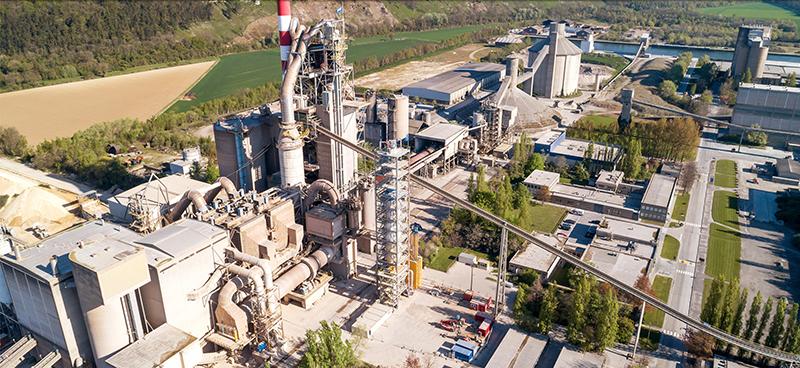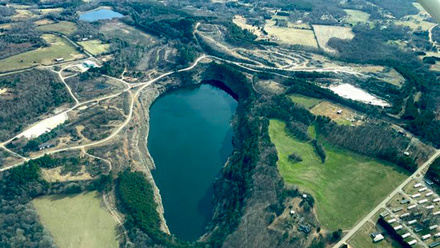Capturing the UK’s carbon complex
How can carbon capture and storage contribute to net-zero? Shardell Joseph reports from an event that explored industrial and government strategies to develop the UK's market.

‘We agree with the [UK] Climate Change Committee that carbon capture storage (CCS) is a necessity, it's not an option, if we're going to make our net-zero targets. We need it to come in, and we need it to work,’ declared Syrie Crouch, Vice President of CCS at Shell, while speaking at the recent Westminster Energy, Environment & Transport Forum policy conference on 'Next steps for carbon capture, usage and storage in the UK – market development, regulation, and the low-carbon economic recovery policy agenda'.
Dr Chris Manson-Whitton, Director of UK engineering consultants Progressive Energy, added, ‘It's a challenging space to work in…Fossil emissions are a real problem. Some data I came across…is that two thirds of our global fossil emissions since the dawn of time have happened in my lifetime. That really does set the parameters of what we're trying to achieve.’
Technologies for CCS are becoming more readily available, and the industrial, academic and government experts at the online event analysed the value of transitioning to low-carbon technologies, and how this might be achieved.
‘CCS has an important contribution to economic resilience in terms of protecting our existing industrial competitiveness, our existing industrial energy intensive industries, as well as creating opportunities for new inward investment through putting in place low-carbon infrastructure,’ said Will Lochhead, Deputy Director of Business Models at the Department of Business, Energy & Industrial Strategy (BEIS).
This low-carbon infrastructure, Lochhead noted, can be delivered through CO₂ transport and storage pipelines, in turn, creating new jobs and enabling existing jobs ‘with a potentially higher carbon focus to transition into a low-carbon equivalence.
‘[The United Nations Climate Change Conference] COP26 is obviously in everyone's mind, and is an opportunity to demonstrate that international leadership, particularly with countries such as the US but also our European counterparts in the Netherlands, Norway and elsewhere.’
Crouch outlined the different approaches industry must take for decarbonisation. ‘One is transforming our own business emissions by looking for more lower carbon energy that we can add to the environment, in terms of electric vehicles, hydrogen, solar, wind, etc. The second approach is decarbonising our own emissions and taking an approach where we look at energy efficiency for our own oil and gas production.
‘The other point…is working with others to reduce the emissions [to] utilise the energy products we sell to our customers to reduce their emissions…[and] actually working with them as they move through that net-zero emissions journey with us.’
Going LEILAC
Low Emissions Intensity Lime and Cement (LEILAC) is a European Union Horizon 2020 Research and Innovation project, which aims to create cheap and efficient carbon capture for the cement and lime industries.
The €21mln project, made up of a European consortium including Imperial College London, UK, involves developing a new method of calcining limestone, which instead of mixing with fuel and air, is segregated, and the gas streams kept separate. A process known as direct separation.
In the direct separation unit, an inner tube containing steam and limestone is heated by the combustion of fuel in the outer tube (annulus). The steam can be easily separated from the CO₂ produced through calcination by condensing it out, unlike separating CO₂ from nitrogen.
‘Coming to the end of the demonstration…the EU horizon 2020 project worked very nicely. It was a different type of calciner. This is the sort of thing that you need to be building, in order to demonstrate these technologies that will be significantly cheaper in the future,’ says Professor Paul Fennel, a Supervisor of the project.
A second stage of the project, LEILAC 2, involves collaboration with Australian technology company Calix, scaling the latter’s CO₂ mitigation technology for the cement and lime industries for demonstration at the HeidelbergCement plant in Hanover, Germany.
Price to pay
Paul Fennel, Professor of Clean Energy at Imperial College London, UK, highlighted that industrial sources of CO₂ are not homogenous, as there are many different types with varying concentrations. ‘Now, what does that mean? It means that they are going to be varying in price in order to…pull this CO₂ out from them.
‘It becomes very expensive to capture something when you have a very low concentration of it. CO₂ capture from the air being relatively expensive in comparison to CCS in many different industries.
‘The major point is that the more concentrated, in general, the cheaper it is to capture CO₂. We've looked through the literature for a variety of CCS systems, and the important thing here is that different industries…will have different costs. And different technologies will be differently suitable for particular types of industries.’
Lochhead reminded attendees that the UK Government’s Ten point plan for a green industrial revolution includes a commitment to provide details of a revenue mechanism this year. He asked, ‘How do we fund those business models and that discussion around an affordability envelope for projects to provide visibility and clarity for investors and project promoters going forward?
‘A key part of the ten point plan is to maximise emission [reduction], but also maximising the industrial benefits of supporting such technologies – gearing up the supply chain and maximising those opportunities for UK companies.
‘What do we really need?’ Crouch asked. ‘And what would drive our decision making process as a potential investor in CCS, and in particular, for the UK market?’ She suggested that for CCS to be a growth sector for the UK, it cannot remain a subsidised industry and the right investment environment must be created for the private sector to take over.
‘So, in this regard, we welcome and we acknowledge the government's recent updates on those proposed commercial frameworks. But we do look forward to seeing further refinements shortly because there are still some open switches that we need to understand better before this level of capital investment.’
The CCS projects would involve large capital investment, Crouch admitted, as well as a long lifetime and payback period. ‘Therefore, the private sector needs the right incentives. And we need clarity about what those incentives are, to help us make investment decisions and to get the projects in the right position.
‘How do we best incentivise this up? For example, once you have built the capture plant, well that's pretty much it – you've got the optics and running costs, etc. to worry about – it needs continued investment, and it needs continuous growth…[In addition], the commercial frameworks need to allow for the differences in return profile, operating complexity and the ongoing requirements that's going to be there. So, what we're looking for is indeed a commensurate rate of return, relative to the complexity of the sector.’
Taking a more Keynesian approach to the economics of CCS, Fennel contemplated, ‘I'm a big believer in the invisible hand. And as soon as there's an actual price on carbon, a realistic price on carbon, somewhere near the social cost…then the newer technologies will start to compete very significantly with the incumbent technologies, and they will end up being much cheaper.’
Investing in carbon capture utilisation and storage
The UK Government's aims:
- £1bln – support for the establishment of carbon capture utilisation and storage in four industrial clusters
- 2 – industrial clusters to be established by mid 2020s, with four by 2030
- 10Mt – of CO₂ to be captured a year by 2030
Investment in carbon capture utilisation and storage could deliver:
- Up to £1bln of public investment by 2025
- Savings of around 40Mt CO₂ between 2023 and 2032, or 9% of 2018 UK emissions
- Support for around 50,000 jobs by 2030







